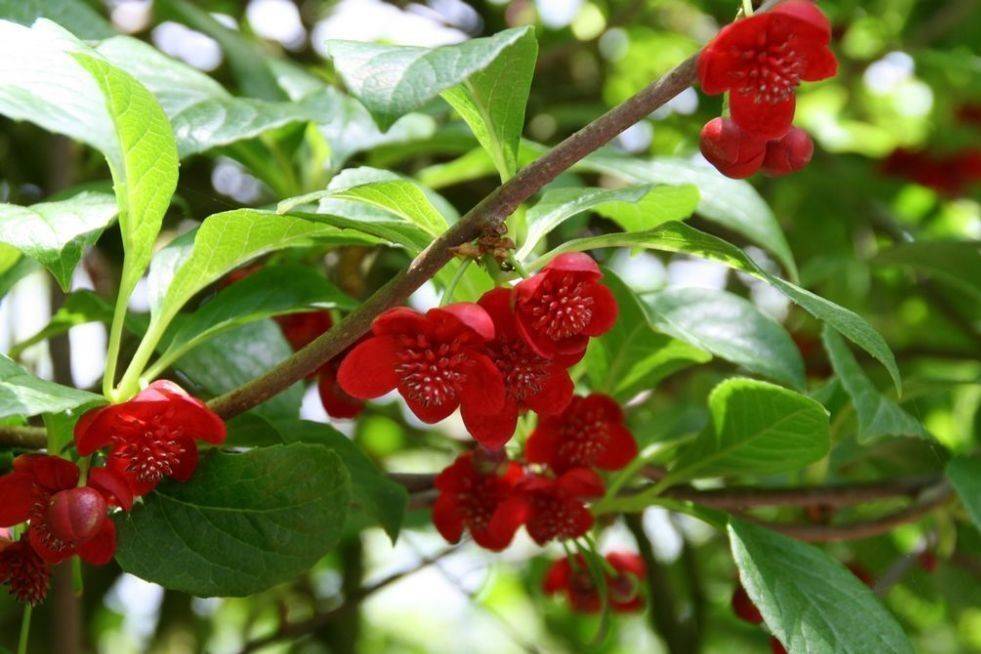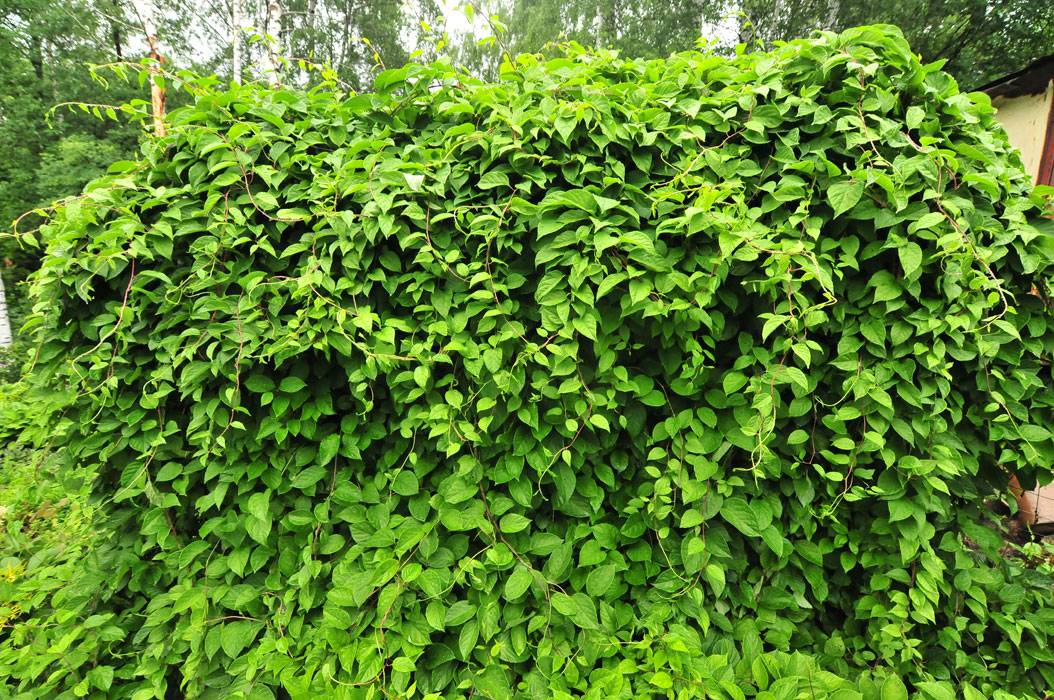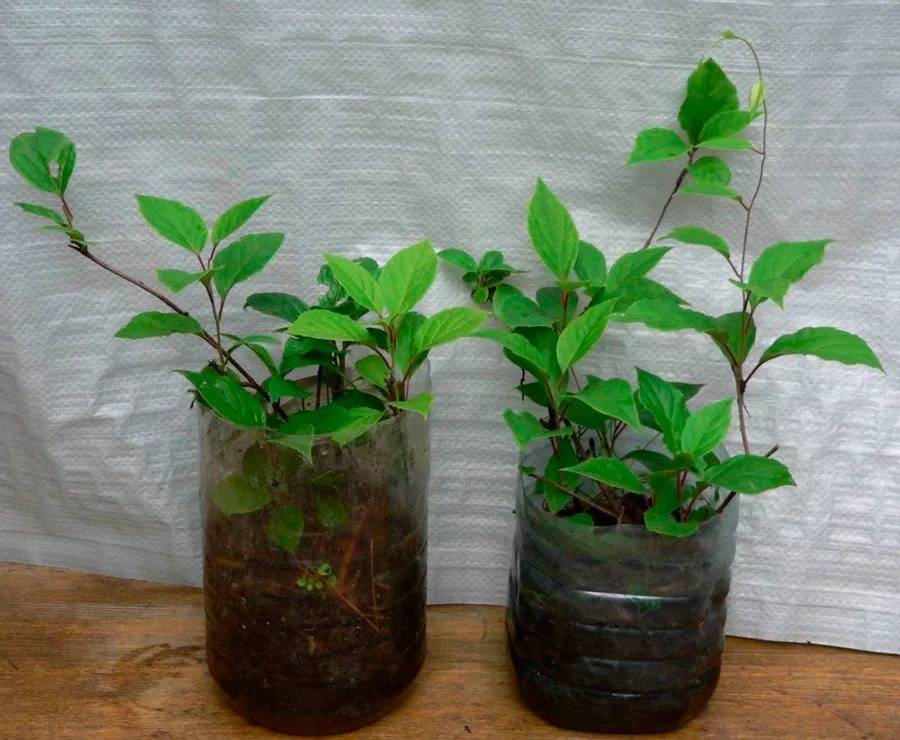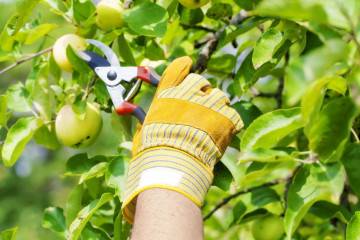Chinese schisandra - how to plant correctly
Content:
Schisandra is a plant whose name in Latin sounds like "Schisándra chinénsis". This deciduous vine grows in the northern regions of Russia, but bears fruit more often in the south. The fruits, leaves and seeds of Schisandra chinensis are used for the preparation of various medicines. Below is a description of what lemongrass looks like, where to plant it, what to do with the berries.
The origin and appearance of lemongrass
Lemongrass is a shrub, a vine from the genus Lemongrass. It grows in East Asia. It is grown by residents of China, Japan and Korea. The flower is also found in Russia, mainly in the northern regions (on Sakhalin Island, in the Primorsky and Khabarovsk Territories, the Amur Region, in the Kuril Islands, the Urals, in Siberia). This is most often a wild-growing species, the fruits of which have an economic purpose.
The characteristics of the plant are as follows:
- an adult lemongrass is a liana that reaches a height of 10-15 m (in the harsh climatic conditions of the northern regions, it stretches no more than 4 m in height);
- curly stem, in need of constant support, covered with dark brown bark;
- the bark of young plants is yellowish brown;
- the leaves are elliptical, sometimes obovate, their base is wedge-shaped, the top is sharp, the color of the leaves is dark green;
- flowering time May-July, how lemongrass blooms and how much depends on the area and climate, most often the process does not take more than 14 days;
- white, pink buds at the end of flowering, very small, no more than 1.5-2 cm in diameter.
In the north, it rarely bears fruit. Needs natural pollination by bees and other insects.
Descriptions of lemongrass fruits and their properties
In place of the faded bud, a brush with berries up to 10 cm long appears. The berries are red, spherical, small, no more than 0.5-1 cm each. Each brush contains 15 to 25 fruits. The berries have a specific taste.
It is known that the fruits of lemongrass:
- tone and strengthen the body, adding vigor;
- have a positive effect on the central nervous system;
- help to quickly adapt to unpleasant and unusual climatic conditions;
- accelerate metabolic processes;
- normalize blood pressure.
Berries are useful to regularly use for people suffering from low acidity. They help to normalize the digestive tract, improve intestinal motility.
Varieties of Chinese, or Far Eastern, lemongrass
In most regions of Russia and the world, lemongrass is a wild plant, but over the years of its study, varieties for cultivation in personal plots were nevertheless bred. There are two of them. Most gardeners grow lemongrass for decorative purposes.
Firstborn
Liana up to 2 m high. It was bred in Russia. Unlike wild plants, the brush of Schisandra Pervenets combines up to 40-45 berries. The fruits are round, small and rather sour.
Leaves are elliptical with small denticles, their ends are pointed. The flowering plant attracts the eye, the flowers are snow-white with minor splashes of pink.
Sadovy-1
This variety of lemongrass is bred in Ukraine. Liana rises to a height of 5-6 m. Leaves are ovoid, pleasant to the touch, they are light green in color. The skin of the fruit is red, the flesh is juicy, and the taste is very sour. Each brush contains 25-35 berries.
In a fruitful year, one liana gives up to 3 kg of berries, from which you can make healthy compote, jam, jelly.
The Crimean lemongrass is considered less popular among gardeners. It grows exclusively in Crimea, and locals use its leaves to make tea. Berries are used in the production of tinctures that help with gastrointestinal diseases. Flowers are small, pale yellow.
Transplanting lemongrass after purchase in open ground
Lemongrass flower is actively used by landscape designers. Its flowers are small and not very attractive, but during the fruiting period, which falls in autumn, the plant becomes a real decoration of any garden. It does not need special care, so even beginners can grow vines.
What is needed for landing
In order for lemongrass to take root in a new place, you must:
- Choose the right site for planting.
- Plant at a specific time, guided by weather conditions. In the north, young plants are planted in the spring. In the south of Russia and in Ukraine, it is better to do this in the fall.
- Disinfect the tool. For planting you need a shovel, possibly a rake. Before use, they are treated with a solution of potassium permanganate. It is advisable to spill the ground where the hole will be dug with boiling water.
- Dig a deep hole.
- Install the supports. These can be pillars (concrete or wooden) with a height of 2 m with rows of wire stretched between them. The growing shoots are gradually twisted by a wire or tied to it with thick threads.
- Choose the right seedling. Young vines with a well-developed root system are suitable for planting. Each stem should have 3 roots from 15 cm long. A plant that has reached the age of 2-3 years has a height of at least 10-15 cm.
Choosing the best place
The area where it is planned to grow lemongrass should be well lit. Direct sunlight will not damage the liana, but the shade or partial shade can negatively affect the future harvest. Liana and drafts are poorly tolerated. It is protected from the wind by planting it near a fence or next to tall trees that do not shade the plant, but protect it from adverse weather conditions.
If the climate is temperate (for example, the Moscow region), then it is better to plant on the western side of the garden, allowing you to enjoy the sun's rays. In the middle zone of the country, the eastern part of the site is chosen, protecting it from the heat.
When choosing a site, carefully study the composition of the soil. Lemongrass prefers loose, light, air and moisture permeable soil. Peat and clay areas are not suitable for him.
Step-by-step planting process
Preparation for planting begins with digging a hole. The time of work depends on the time of planting the plant. So, if lemongrass is planned to be planted in the fall, then the hole is dug 2-3 weeks before that. When planting in spring, the hole is dug in the fall. The pit should be approximately 50 cm deep and 60-65 cm wide.
Not knowing how to plant lemongrass, follow the instructions:
- The bottom of the hole is covered with drainage, it can be ceramic chips, gravel or expanded clay (dense layer, up to 10 cm thick).
- The earth left after digging a hole is mixed with ash, compost, humus, superphosphates and potassium sulfate.
- During the inspection, all rotten or dried elements are removed from the roots, if they are too long, then shortened (up to 25-30 cm of root mass should remain).
- Keep the roots in a solution of potassium permanganate with the addition of a growth stimulant for 24 hours.
- Mix clay and cow dung and cover the root system with this mixture, leaving it to dry in the sun for 2-3 hours.
- The seedling is placed in a prepared hole, covered with water.
Up to 20 liters of water are poured under the roots of a newly planted plant. The land is mulched using peat chips.
Reproduction of lemongrass
If the plant is planned to be transplanted to a new place, then it is better to first propagate it, having received young seedlings, and only then plant it. Adult vines do not take root well in a new place, they often die. Not knowing how to propagate lemongrass, they use the method inherent in all vines.
Propagation by cuttings
It is more convenient to grow Japanese lemongrass from root cuttings. To do this, take one long root, cut it off with a pruner, separating it from the main part of the plant, and cut it into pieces 7-10 cm long each. Moreover, all segments must have at least 2 growth points. Further planting material:
- Wrapped in a cloth soaked in a growth stimulator.
- They are planted in a pot horizontally at a distance of 10-15 cm from each other.
Cuttings should not be dug into the ground, it is necessary to sprinkle them with humus or rotted compost. As a result, a layer of 2-3 cm should be obtained, completely covering the future young growth. You can plant it directly in open ground or cover the pot with a film, building something like a greenhouse. Planting is done in the fall. Cuttings, on which roots and even twigs will appear by spring, are planted in the garden.
Breeding with cuttings and seeds is not the only way, plants can also reproduce by cuttings.
Growing from seeds
Not a very popular breeding method. The seeds are viable for the first 2-3 months after harvest. Sowing can only be done in autumn. Seedlings cannot be grown, this is not an indoor flower. Seeds are sown immediately after receiving on a prepared bed in advance. If it is planned to store late harvested planting material before the onset of warmth, then:
- Cleanse seeds from pulp, dry them.
- Fill a flat plate with a mixture of peat and sand.
- Spray it with sterilized water.
- Place the seeds in a container, mixing with a wet substrate.
- Store the plate all winter in the refrigerator, periodically moistening it with water.
In February, seeds are sown in pots filled with peat, humus and coarse sand. After 12-15 days, the first shoots appear. The earth needs to be constantly moistened. If this is not done, then seedlings should be expected no earlier than in 2-2.5 months.
Seeds planted in open ground are buried 1.5-2 cm underground. After snow falls, a large pile of snow is shoveled at the landing site.
Lemongrass care
Taking care of the plant is easy. It does not need any special feeding and conditions for growth.
Watering mode
Lemongrass bushes love moisture. The wild plant prefers swamps and river floodplains. At home, it is watered once every 3 days, pouring up to 70 liters of water under each root. At the same time, they carefully monitor that liquid does not accumulate in the well. If it is not absorbed immediately, the amount of watering is reduced.
If the weather is hot outside, it is necessary to spray the leaves with a spray bottle. All young seedlings need daily spraying. After each watering, the soil is loosened, not allowing a crust to form.
Top dressing
They are fed with natural fertilizers. These can be infusions from cow dung, bird droppings, nettle leaves and dandelion. Such fertilization is insisted for 3-4 days. Water every 2 weeks.
In the store you can buy complex fertilizers, which contain potassium, nitrogen and phosphorus. Approximately 1 time in 3 years, up to 30 liters of humus or compost is poured under the roots.
Preparing for winter
Lemongrass can withstand a drop in air temperature to -35 ° C. In regions with a warm climate, it is not sheltered. In the north, shoots are removed from the support, laid on the ground and covered with spruce branches. Before that, the earth is spilled with water.
In the fall, you can prune the plant, this is done no more than 1 time in 3 years. Grass is removed from under the roots, the ground is mulched.
Lemongrass is the best plant for a summer residence. It is a liana with beautiful leaves and bright red fruits, used to make medicinal infusions, delicious compotes and sweet jams. Fresh berries are almost never consumed, a pleasant sour lemon aroma emanates from the fruits and green parts of the plant, the fruits themselves are very sour. The plant is undemanding to growing conditions. Even a beginner can figure out where and how to plant lemongrass.

























